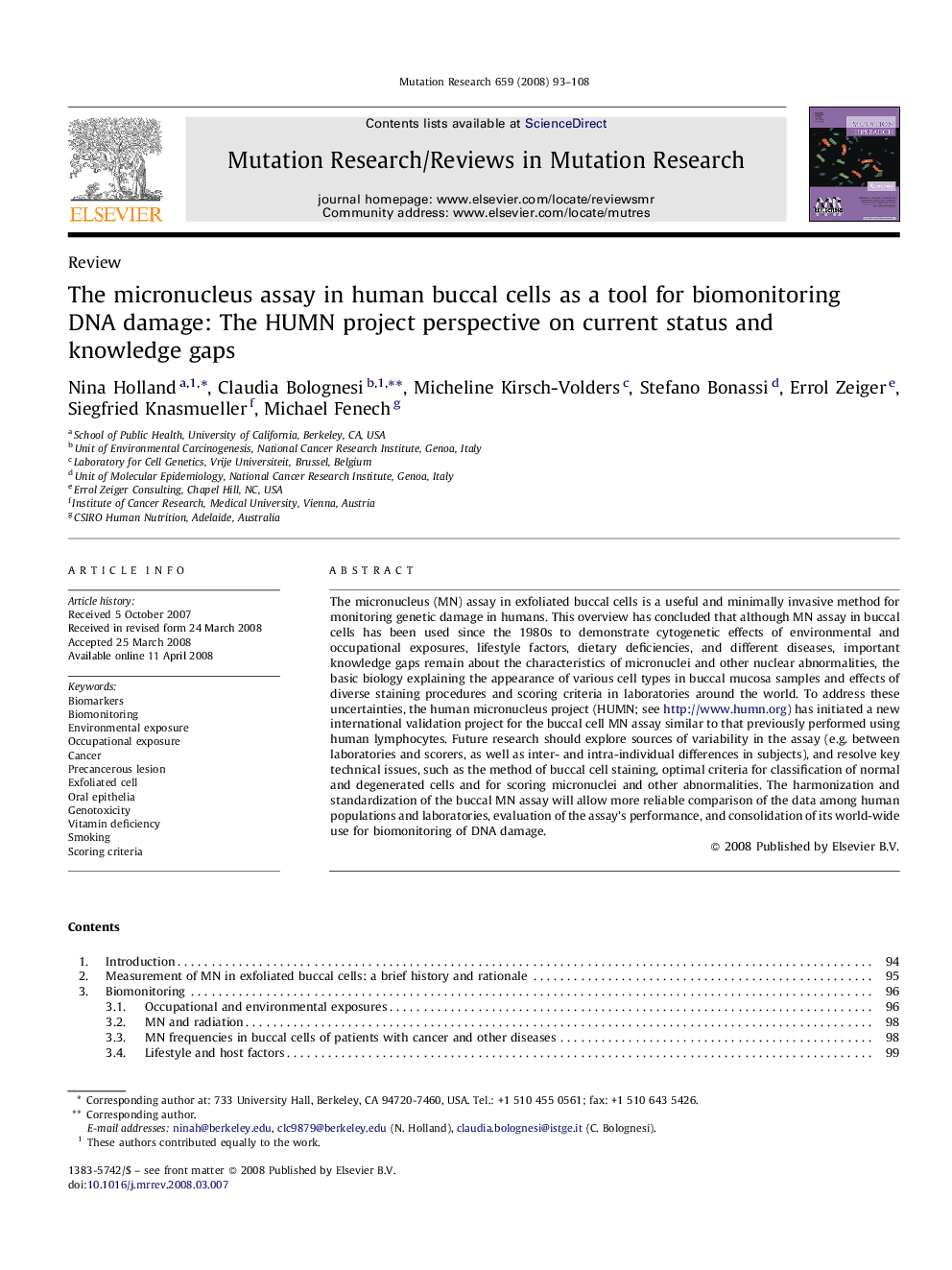| Article ID | Journal | Published Year | Pages | File Type |
|---|---|---|---|---|
| 2149793 | Mutation Research/Reviews in Mutation Research | 2008 | 16 Pages |
The micronucleus (MN) assay in exfoliated buccal cells is a useful and minimally invasive method for monitoring genetic damage in humans. This overview has concluded that although MN assay in buccal cells has been used since the 1980s to demonstrate cytogenetic effects of environmental and occupational exposures, lifestyle factors, dietary deficiencies, and different diseases, important knowledge gaps remain about the characteristics of micronuclei and other nuclear abnormalities, the basic biology explaining the appearance of various cell types in buccal mucosa samples and effects of diverse staining procedures and scoring criteria in laboratories around the world. To address these uncertainties, the human micronucleus project (HUMN; see http://www.humn.org) has initiated a new international validation project for the buccal cell MN assay similar to that previously performed using human lymphocytes. Future research should explore sources of variability in the assay (e.g. between laboratories and scorers, as well as inter- and intra-individual differences in subjects), and resolve key technical issues, such as the method of buccal cell staining, optimal criteria for classification of normal and degenerated cells and for scoring micronuclei and other abnormalities. The harmonization and standardization of the buccal MN assay will allow more reliable comparison of the data among human populations and laboratories, evaluation of the assay's performance, and consolidation of its world-wide use for biomonitoring of DNA damage.
